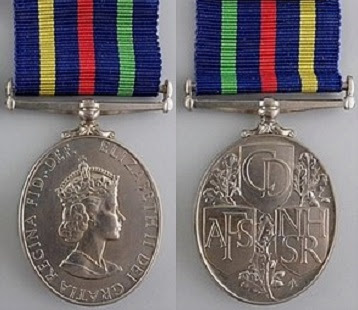Rescue Section Equipment
Part One – On the Belt
Each man in the Rescue section's 8-man Rescue parties carried his own equipment. A Rescue Platoon was made up of five "standard" parties carrying manpacks and one 8-man party carrying "platoon equipment". All the men in a Platoon wore the belt equipment detailed below.
The list of Rescue Section belt equipment from
“Civil Defence Handbook No. 7 - Rescue” (1960 edition).
[Note: my copy of this manual has "Cord, personal 15 ins altered to 15 ft]
The Belt.
The belt issued is a standard army 1944 pattern webbing belt which is made up of three pieces of webbing which hook together allowing you to adjust the waist size. The two upright webbing braces hook onto the shoulder straps of the manpack when worn.
The left-hand side has the water bottle carrier (used as a pouch by the Civil Defence Corps, see below) looped onto it. The right-hand side has a loop with a press stud which carries the 15 ft cord. To the left of the cord is the webbing pouch for the axe.
Axe, fireman’s.
Most often a Chillington Arpax (see left above) in a webbing belt pouch but in some Civil Defence Corps Divisions, men wearing the older wooden handle fire axe with its leather pouch can still be seen (see right above), especially in photographs from the 1950s.
Cord, personal.
A fifteen foot (4.6m) hank of 1/4inch (6mm) diameter cord, which is hung from the press studded loop on the right of the belt. In practice, as can be seen in photographs & films, many Rescue team members wrapped this cord around their waist.
In a couple of photos, I have seen individuals wearing a version of the “Cord, personal” with a toggle on it. It is possible that they are using an issued or self-made version of the army toggle rope which was carried by troops in the Second World War. The toggle rope has a toggle spliced into one end and a spliced eye loop on the other allowing it to be attached to another similar rope without knotting it. [Since I already had a toggle rope, this is what I wear on my belt.]
The Carrier (pouch).
The Carrier is, in fact, the carrying pouch for the 1944 pattern water bottle issued to the members of the Rescue Section. The water bottle is carried in the man’s first aid haversack and so the carrier is free for use as a belt pouch. It closes with press studs and leaves a gap in the top (where the mouth of the water bottle would be [I have found that I can fill this gap with my rubberised torch to help keep the carrier contents dry].
In the Carrier.
Torch, electric, 2 cell:
A small electric torch which should have a rubberised, waterproof body.
Goggles, dust (pair):
Protective goggles of a variety of patterns were issued. Each local authority seems to have sourced their own. [Mine are ex-Royal Navy issue and have two separate layers of glass to protect your eyes if the outer layer gets broken].
Dressing, mine (4):
“Mine” dressings are what we would call sterile first aid dressings
today, a package with a sterile bandage and attached lint pad. These
were for use on yourself or on casualties if you didn’t have your first
aid haversack with you.
Dressings, adhesive:
A small tin of sticking plasters for minor cuts & abrasions. An ex-Rescue team member told me that they were only to be used on yourself (as you were likely to get small cuts etc whilst doing Rescue work. He said it was stressed that if you cut yourself when working in a Fallout contaminated zone, you were to put the plasters on cuts as quickly as possible to stop Fallout particles getting inside your body.
Gloves, debris (pair)
A pair of heavy duty leather working gloves to protect your hand when working. They were to be carried in the map pocket of your Battle Dress trousers or denims.
Knife, clasp, with lanyard.
The standard army issue clasp knife was issued along with an off-white or khaki cord lanyard. Officially, it was to be carried in the left-hand breast pocket of your Battle Dress trousers or denims with the lanyard worn over the left shoulder but, in photographs & films, you can see that many men wore the lanyard around their waist with the knife tucked into the trousers’ pocket.
Sources:
“Civil Defence Handbook No. 7 - Rescue” (1960 edition).
All the equipment in the photographs is my reenactment kit when I am portraying a Rescue section member.















